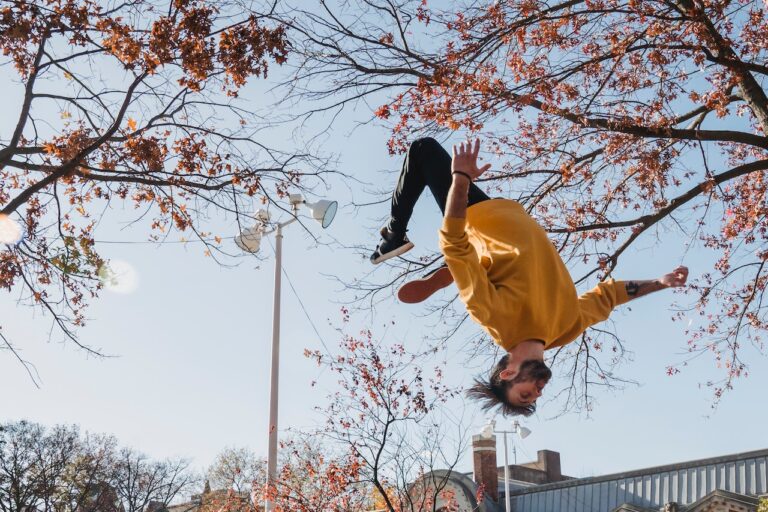Rise Above: Unleashing Resilience for High-Performance Leadership
The Power Within: Building Resilience for High-Performance Leadership
Leadership is a demanding role that requires individuals to make tough decisions, manage teams, and face unforeseen challenges. The ability to adapt to difficult situations, overcome obstacles, and maintain a positive attitude in the face of adversity is crucial for leaders. This ability is commonly known as resilience. Resilience is the capacity to recover from difficult experiences, setbacks, or failures, and to come back stronger than before.
Resilience is essential for leaders because they face constant pressure to perform at a high level, deal with multiple stakeholders, and manage competing priorities. In today’s dynamic and ever-changing business environment, leaders who lack resilience are likely to struggle, burn out, and make poor decisions. Conversely, those who possess high levels of resilience are better equipped to navigate challenges, lead their teams effectively, and achieve long-term success.
The purpose of this article is to explore strategies for building resilience and to offer guidance to leaders looking to develop this crucial trait. Resilience is not an innate characteristic; it can be developed and strengthened through intentional effort and practice. This article will provide insights into the types of resilience, factors that contribute to resilience, and strategies for building resilience. By the end of this article, readers will gain a better understanding of the importance of resilience for leaders and how they can develop this key trait in themselves and in their teams.
Leaders who invest in building resilience will be better equipped to face challenges, recover from setbacks, and maintain a positive outlook in difficult situations. The strategies outlined in this article will not only benefit leaders in their professional lives but will also have a positive impact on their personal well-being. The ability to bounce back from challenges, stay motivated, and maintain a positive attitude is critical to living a fulfilling life. With that in mind, let us explore the topic of resilience and discover how leaders can develop this vital trait.
Understanding Resilience
Explanation of resilience in the context of leadership
Resilience is an essential quality for leaders, but what does it mean to be resilient in the context of leadership? Resilient leaders are those who can overcome adversity, adapt to change, and recover quickly from setbacks. They can remain calm and focused in difficult situations and make sound decisions that lead to positive outcomes. In essence, resilient leaders are those who can lead their teams effectively, no matter what challenges they may face.
Resilience in leadership is more than just the ability to push through tough times. It is a mindset that enables leaders to view challenges as opportunities for growth and development. Resilient leaders have a positive outlook on life and maintain a sense of optimism, even in the face of difficult situations. They are not afraid to take calculated risks and are willing to learn from their mistakes.
Different types of resilience
There are several types of resilience that leaders need to develop to succeed in their roles. These include:
-
Emotional resilience: the ability to manage emotions effectively, regulate moods, and maintain a positive attitude in challenging situations.
-
Cognitive resilience: the ability to maintain focus, think critically, and solve problems under pressure.
-
Physical resilience: the ability to maintain physical health, energy levels, and stamina to sustain performance over time.
-
Social resilience: the ability to build and maintain positive relationships with others, including team members, stakeholders, and customers.
Each of these types of resilience is interconnected and contributes to an overall sense of resilience that enables leaders to perform at their best.
Factors that contribute to resilience
Resilience is not an innate characteristic; it is something that can be developed and strengthened over time. There are several factors that contribute to resilience, including:
-
Growth mindset: the belief that challenges and setbacks are opportunities for growth and development, and that failure is not a reflection of personal worth.
-
Emotional intelligence: the ability to recognize, understand, and manage emotions in oneself and others.
-
Self-care: the practice of taking care of one’s physical, emotional, and mental well-being to sustain long-term performance.
-
Support systems: the presence of positive relationships, including friends, family, and colleagues, that provide emotional and practical support.
-
Purpose and meaning: a sense of purpose and meaning in one’s work and life that provides a sense of direction and motivation.
Developing these factors requires intentional effort and practice. By focusing on building these skills and habits, leaders can develop a greater sense of resilience, enabling them to lead their teams effectively and achieve long-term success.
Building Resilience
Mindset: how to develop a growth mindset
Developing a growth mindset is critical to building resilience. A growth mindset is the belief that challenges and setbacks are opportunities for growth and development. This mindset enables leaders to view difficulties as opportunities for learning and to persist in the face of setbacks. To develop a growth mindset, leaders should focus on reframing their thinking and language to view challenges as opportunities. They can also seek feedback, learn from mistakes, and celebrate progress.
For example, Mary Barra, the CEO of General Motors, faced a major crisis in 2014 when the company was hit with a massive recall of defective vehicles. Rather than viewing the crisis as a setback, Barra used the opportunity to overhaul the company’s culture and improve its focus on safety and quality. She acknowledged the mistakes that had been made and took decisive action to address them, demonstrating a growth mindset that helped her to lead the company through a difficult time.
Emotional intelligence: how to manage emotions
Emotional intelligence is the ability to recognize, understand, and manage emotions in oneself and others. Leaders with high emotional intelligence can regulate their emotions effectively and respond appropriately to the emotions of others. To develop emotional intelligence, leaders can practice active listening, be aware of their emotions and how they influence their behavior, and practice empathy. They can also seek feedback from others and reflect on their emotional responses to different situations.
One example of a leader who has successfully developed his emotional intelligence is Satya Nadella, the CEO of Microsoft. Nadella has spoken publicly about how his experience as a father of a child with disabilities helped him to develop greater empathy and compassion, which he has brought to his leadership style. By creating a culture that values empathy, Nadella has been able to build a more collaborative and innovative team at Microsoft.
Physical and mental well-being: the importance of self-care
Self-care is critical to maintaining physical and mental well-being, which is essential to building resilience. Leaders who neglect their physical and mental health are at risk of burning out and experiencing negative effects on their overall performance. To prioritize self-care, leaders can practice good sleep hygiene, eat a healthy diet, exercise regularly, and practice relaxation techniques such as mindfulness and meditation. They can also set boundaries to ensure they have time for rest and rejuvenation.
One example of a leader who prioritizes self-care is Arianna Huffington, the founder of the Huffington Post. After experiencing a burnout and collapsing from exhaustion in 2007, Huffington made significant changes to her lifestyle to prioritize her well-being. She has since become an advocate for the importance of self-care in leadership, and has implemented programs at her company to support employee well-being.
Support systems: the importance of having a supportive network
Support systems are critical to building resilience. Leaders who have supportive relationships with friends, family, and colleagues are better equipped to navigate challenges and overcome setbacks. To build a supportive network, leaders can seek out mentors and coaches, participate in networking events, and invest in building positive relationships with team members, stakeholders, and customers. They can also join peer groups and professional associations to connect with like-minded individuals and build a sense of community.
One example of a leader who has benefited from a supportive network is Jeff Bezos, the founder of Amazon. Bezos has credited his success in part to the support he has received from his family, friends, and colleagues over the years. By building a strong network of supporters, Bezos has been able to take on ambitious goals and navigate the ups and downs of entrepreneurship with greater resilience.
Building resilience is critical to success in leadership. Resilient leaders can adapt to change, overcome challenges, and maintain a positive attitude in difficult situations. Developing resilience requires intentional effort and practice, including developing a growth mindset, practicing emotional intelligence, prioritizing self-care, and building supportive networks. By investing in these strategies, leaders can develop a greater sense of resilience, enabling them to lead their teams effectively and achieve long-term success.
Developing Resilience in Others
The role of leaders in fostering resilience in team members
Leaders play a critical role in fostering resilience in their team members. By creating a culture of resilience, leaders can help their teams to cope with setbacks, bounce back from adversity, and learn from failures. To foster resilience, leaders must model resilience by maintaining a positive attitude, being transparent about their own challenges and setbacks, and demonstrating a growth mindset. Leaders should also create an environment that encourages team members to take risks, experiment, and learn from failures.
Strategies for developing resilience in teams
There are several strategies that leaders can use to develop resilience in their teams. First, leaders should invest in training and development programs that help team members to build their emotional intelligence and self-awareness. These programs can include coaching, mentoring, and training in mindfulness and meditation. Second, leaders should encourage team members to take care of their physical and mental health. This can include offering wellness programs, flexible work arrangements, and resources for stress management. Third, leaders should create opportunities for team members to collaborate, communicate, and support one another. This can include team-building activities, peer-to-peer mentoring, and regular check-ins.
The impact of a resilient team on overall performance
A resilient team can have a significant impact on overall performance. A team that is resilient is better equipped to adapt to changes, overcome challenges, and maintain a positive attitude in difficult situations. This can lead to increased productivity, better decision-making, and improved morale. A resilient team is also better able to learn from failures and use those lessons to drive continuous improvement. In addition, a resilient team can help to foster a culture of resilience throughout the organization, leading to greater overall success.
In conclusion, developing resilience in others is a critical part of effective leadership. Leaders who foster resilience in their team members can create a culture of resilience that drives performance, innovation, and success. To develop resilience in teams, leaders must invest in training and development programs, encourage team members to take care of their physical and mental health, and create opportunities for collaboration and support. By doing so, leaders can create teams that are better equipped to cope with challenges, learn from setbacks, and achieve long-term success.
Implementing Strategies for Building Resilience
While it’s important for leaders to understand the importance of resilience and strategies for building it, it’s equally important to know how to implement these strategies in practice. Here are some specific ways that leaders can implement these strategies and build resilience in themselves and their teams:
Creating a Culture of Resilience
Leaders can create a culture of resilience by setting the tone for the organization and modeling resilient behavior. This means being transparent about challenges, admitting mistakes, and staying positive and optimistic even in the face of setbacks. Leaders should also encourage open communication and create an environment where employees feel comfortable sharing their concerns and seeking support when needed.
One way to foster a culture of resilience is by conducting regular “resilience check-ins” with team members. These check-ins can help identify any challenges team members are facing and provide an opportunity to offer support and resources. They can also help team members feel more connected and supported, which can increase their resilience.
Fostering Emotional Intelligence in Teams
Emotional intelligence is an important component of resilience. Leaders can foster emotional intelligence in their teams by modeling and promoting self-awareness, self-regulation, empathy, and effective communication.
One way to promote self-awareness is by encouraging team members to reflect on their emotions and reactions to different situations. This can help them develop a better understanding of their own emotions and reactions, which can in turn help them regulate their behavior more effectively.
Leaders can also promote empathy by encouraging team members to consider the perspectives of others and practice active listening. Effective communication is another important aspect of emotional intelligence, and leaders can promote this by modeling good communication skills and providing training and resources to help team members improve their own communication skills.
By implementing these strategies, leaders can help build resilience in themselves and their teams, which can lead to better performance, increased productivity, and a more positive work environment.
Additional Resources for Building Resilience
While this article provides an overview of strategies for building resilience, there are many additional resources available for readers who are interested in learning more. Here are some examples of resources that may be helpful:
Books
There are many books available that focus on building resilience and developing leadership skills. Some examples include “Option B” by Sheryl Sandberg and Adam Grant, “The Resilience Factor” by Karen Reivich and Andrew Shatte, and “Leaders Eat Last” by Simon Sinek.
Online Courses
There are a variety of online courses available that focus on building resilience and developing leadership skills. Platforms such as Coursera, edX, and Udemy offer courses on topics such as emotional intelligence, stress management, and leadership development.
Webinars
There are many webinars available that focus on building resilience and developing leadership skills. Organizations such as the Harvard Business Review and the American Management Association offer webinars on topics such as leadership development, stress management, and emotional intelligence.
By providing links to additional resources, readers can continue to learn and develop their skills in building resilience and becoming high-performance leaders.
Resilience: The Key to Leadership Success in a Changing World
Importance of resilience for leaders
In today’s constantly changing business environment, resilience has become a critical trait for leaders who want to drive long-term success. Resilient leaders are better equipped to cope with challenges, adapt to change, and learn from failures. They are able to maintain a positive attitude and inspire their teams to do the same, driving productivity, innovation, and overall success.
Strategies for building resilience
Building resilience is a continuous process that requires a commitment to self-awareness, personal growth, and well-being. To build resilience, leaders can focus on developing a growth mindset, managing their emotions, and taking care of their physical and mental health. They can also build a supportive network of colleagues, friends, and mentors who can provide guidance and support.
Prioritize resilience building in themselves and their teams.
As a leader, it’s important to recognize the critical role that resilience plays in driving success. By prioritizing resilience building in yourself and your team, you can create a culture of resilience that fosters long-term success. This means investing in training and development programs that help team members build their emotional intelligence and self-awareness, encouraging team members to take care of their physical and mental health, and creating opportunities for collaboration and support.
In conclusion, building resilience is not just a personal goal, but a critical leadership trait. By prioritizing resilience building in yourself and your team, you can create a culture of resilience that drives performance, innovation, and success. As a leader, it’s important to commit to continuous personal and professional growth, invest in the well-being of your team, and foster a culture of resilience that supports long-term success.






